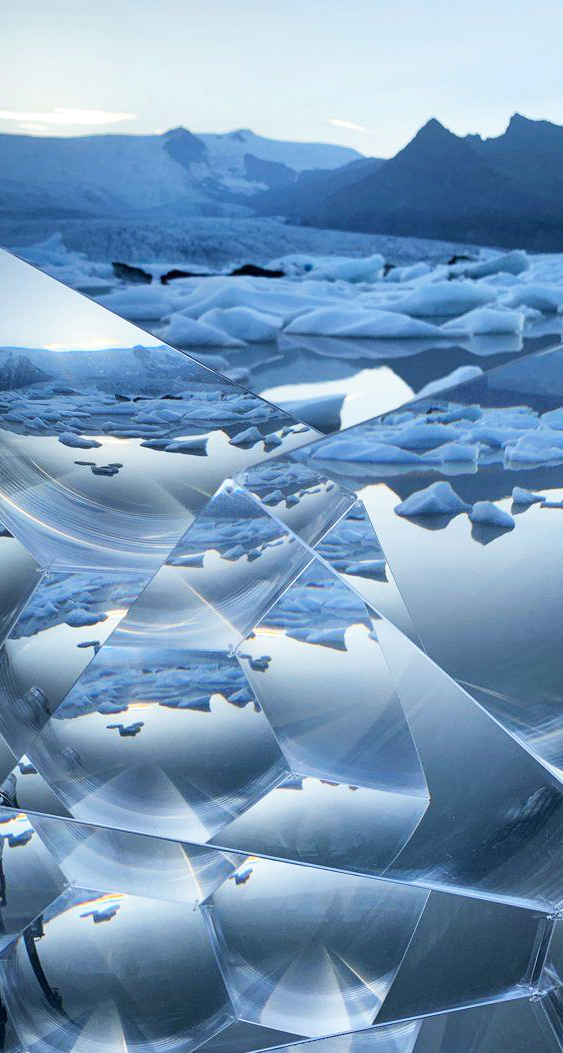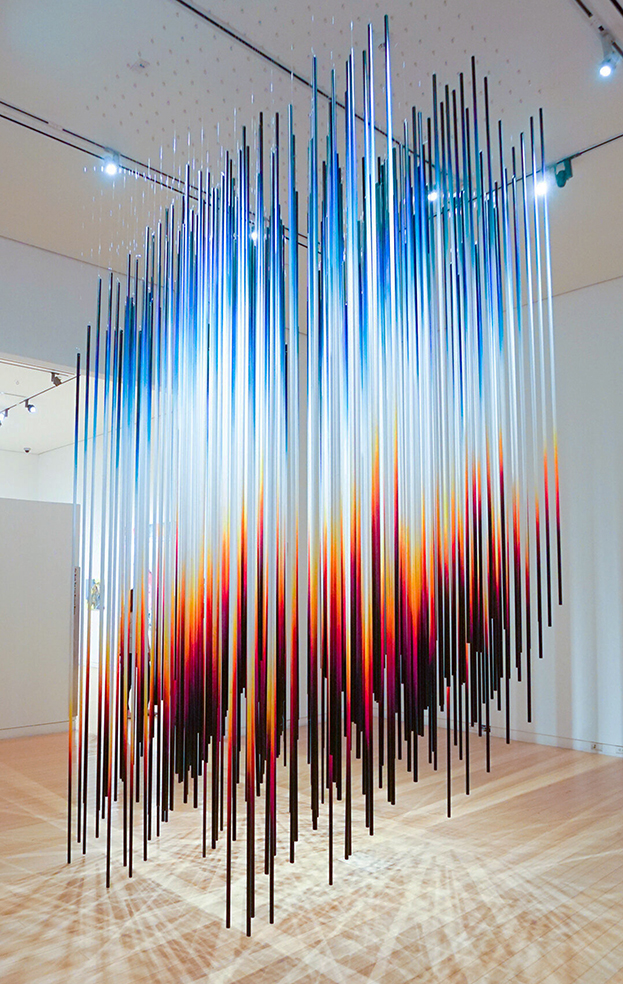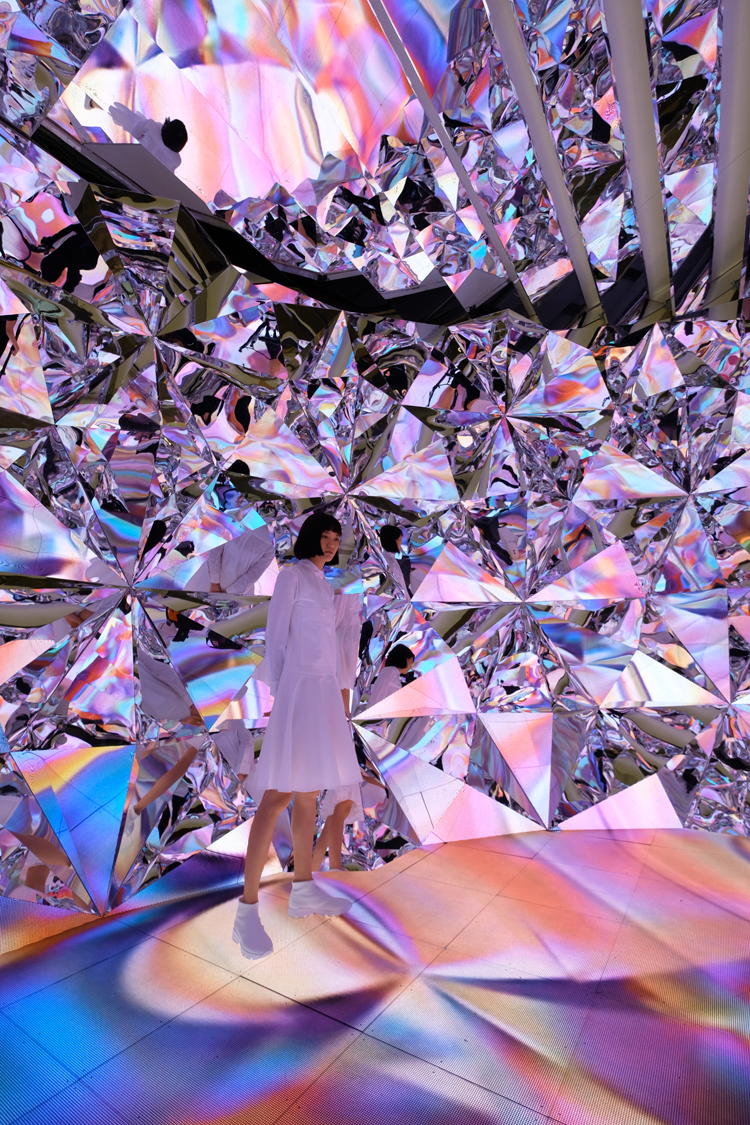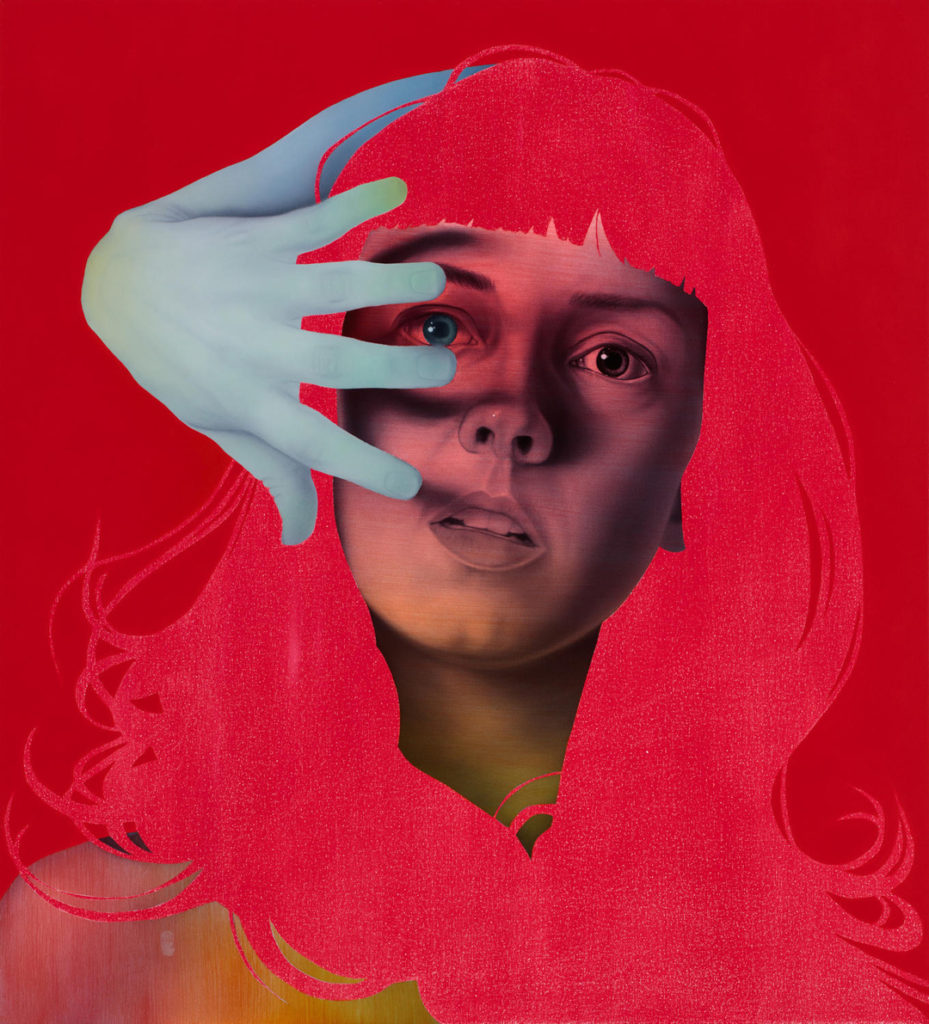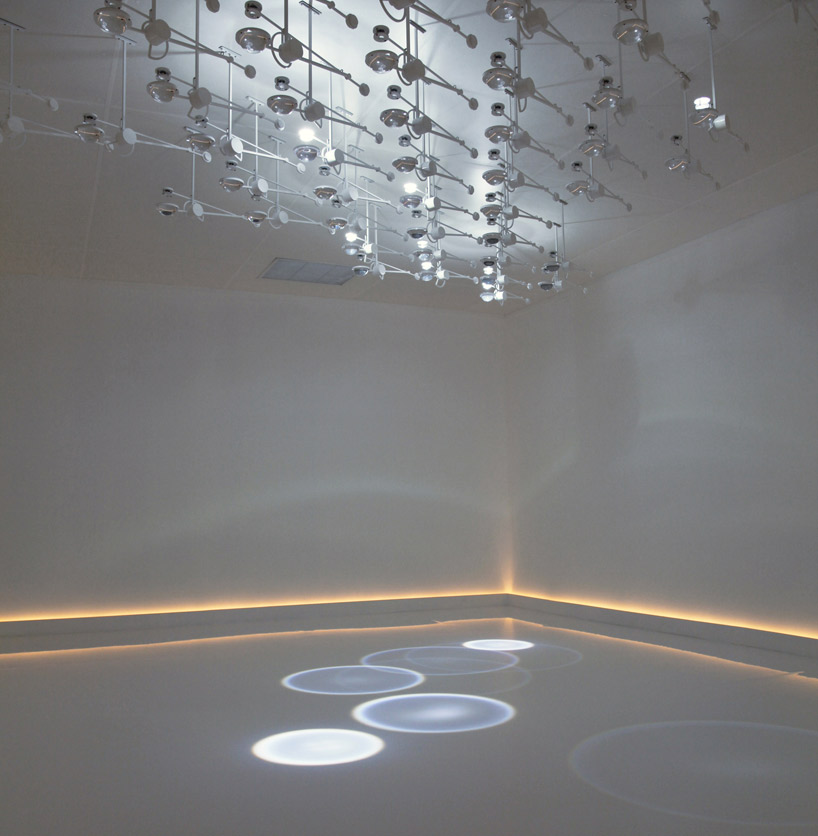Falling Light
‘Oltre un secolo dopo che Sir Isaac Newton aveva analizzato il fenomeno dell’arcobaleno, il poeta inglese John Keats ha commentato che la scienza aveva privato la natura e l’arcobaleno del suo spettacolo riducendo la sua nozione a colori prismatici. “Falling Light” sfida questa convinzione, con un’accattivante interazione cinematografica tra i prismi di cristallo e l’esperienza soprannaturale che sono in grado di creare.
50 dispositivi meccanici sospesi al soffitto, ciascuno dei quali incorpora una lente ottica in cristallo Swarovski tagliato su misura, un motore programmato da computer e un LED bianco, costituiscono l’installazione di TROIKA “Falling Light”.
Le armature metalliche verniciate di bianco si sollevano in sincope ruotando la camma prima che la gravità le rilasci verso terra, attivando il LED per allontanarsi, più vicino alla lente di cristallo. La lente agisce come un prisma, trasformando attraverso la diffrazione la luce bianca del LED in una miriade di arcobaleno, creando a sua volta il flusso e riflusso ritmico delle goccioline sparse sul pavimento.
Sperimentando piccole gocce di luce che cadono dal soffitto sul pavimento della galleria, il visitatore è immerso in una pioggia di luce, ogni goccia circondata da un vibrante alone di colori arcobaleno. In coro, il suono ronzante del meccanismo è udibile: la luce e il suono si fondono in un’unica esperienza immersiva e multisensoriale, rafforzando l’agenda di TROIKA secondo cui la scienza non distrugge, ma piuttosto scopre la poesia nei modelli della natura. “
